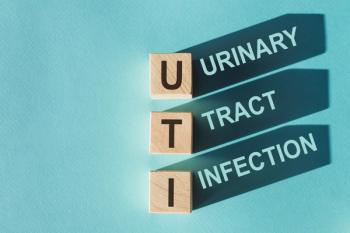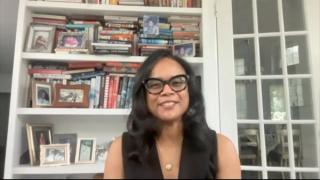
Urology
Latest News
Video Series

Latest Videos
CME Content
More News

Oral sulopenem (ORLYNVAH; Iterum Therapeutics) was non-inferior to amoxicillin/clavulanate for treating uUTIs in women, per the phase 3 REASSURE trial.

A new randomized trial shows Er:YAG laser therapy offers no significant benefit over sham treatment for managing female stress urinary incontinence at 6 months.

GSK and Spero Therapeutics announced that the phase 3 PIVOT-PO trial for tebipenem HBr, a potential first oral carbapenem for cUTIs in the United States, was stopped early because of positive efficacy results.

In this Q&A, Karyn S. Eilber, MD, shares some of the biggest takeaways from the new AUA/SUFU/AUGS 2025 Guidelines on Genitourinary Syndrome of Menopause.

A new study finds no significant difference in symptom improvement between onabotulinumtoxinA injections and midurethral sling surgery for women with mixed urinary incontinence.

A new study reveals that virtual pelvic floor therapy is just as effective as in-person treatment for postpartum women with stress urinary incontinence.

New guidelines on GSM recommends symptom-based diagnosis, shared decision-making, and local estrogen as first-line therapy to improve quality of life.

Review some of the top stories from the Contemporary OB/GYN website over the last week, and catch up on anything you may have missed.

New research reveals a significant link between urinary incontinence and increased cardiovascular disease risk, even without reduced physical activity.

The approval marks a vital step toward care for urinary tract infections, helping to reduce recurrence and improve patients’ quality of life.

Review some of the top stories from the Contemporary OB/GYN website over the last week, and catch up on anything you may have missed.

Review some of the top stories from the Contemporary OB/GYN website over the last week, and catch up on anything you may have missed.

Review some of the top stories from the Contemporary OB/GYN website over the last week, and catch up on anything you may have missed.

A survey by Aeroflow Urology finds many mothers face postpartum incontinence without medical support, impacting their health, stress, and daily life.

BlueWind Medical’s Revi System shows strong two-year efficacy and safety for UUI, with symptom reduction and high patient satisfaction.

A new study demonstrates the efficacy of a deep learning-based transperineal ultrasound system for evaluating bladder neck motion in women with stress urinary incontinence.

A recent study found a sharp rise in Medicare claims for multiplex urinary tract infection testing from 2016 to 2023, underscoring a significant financial impact and the need for further research into its clinical benefits.

Review some of the top stories from the Contemporary OB/GYN website over the last week, and catch up on anything you may have missed.

A study highlights the poor quality of online information about urinary tract infections and asymptomatic bacteriuria, raising concerns about inaccurate diagnoses, overtreatment, and antibiotic resistance.

Iterum Therapeutics has announced the FDA has approved ORLYNVAH (sulopenem etzadroxil and probenecid) for the treatment of uncomplicated urinary tract infections (uUTIs)

In a recent study, significantly more urology websites contained information about male sexual dysfunction when compared to the availability of female sexual dysfunction information on ob-gyn websites.

In a recent study presented at the 25th Annual Fall Scientific Meeting of SMSNA, similar diagnosing success was reported between self-diagnosis and diagnosis from a health care provider for vaginismus.

In a recent study, women with urinary incontinence were more likely to experience postpartum depression at both under and over 6 months after delivery.

The advisory committee meeting will discuss the potential approval of oral sulopenem etzadroxil/probenecid tablets for treating urinary tract infections in women aged 18 years and older.

A new pilot study published in the International Urogynecology Journal found that Materna Medical’s Prep Device, a pelvic floor dilator, reduced full levator ani muscle avulsion during vaginal delivery in first-time mothers.






















